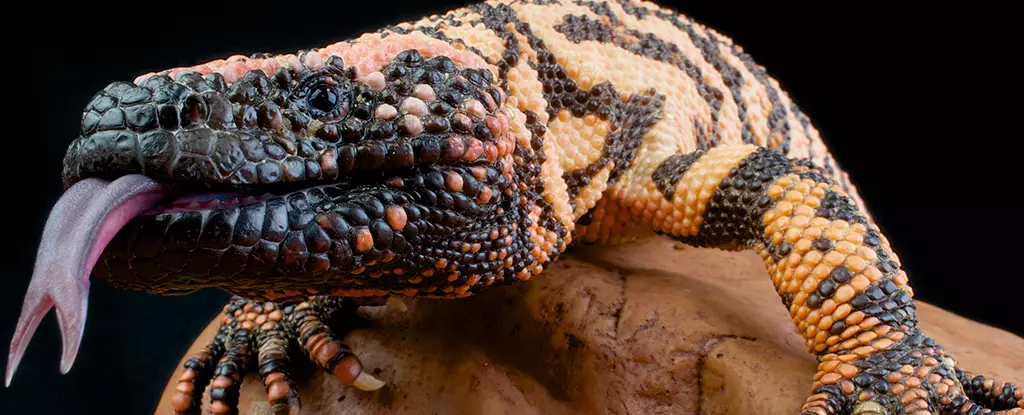As humanity continues to grapple with complex health issues, the solutions may lie in the least expected places—namely, in the venom of some of the most dangerous creatures on Earth. The groundbreaking applications of animal toxins in medicine underscore the unique, and often bizarre, ways that nature has equipped certain species to survive. From diabetes treatments to cancer therapies, the once-feared bites of venomous animals are now being harnessed to improve human health in fascinating ways.
Interestingly, the Gila monster (Heloderma suspectum), a large lizard native to the southwestern United States, has not only survived in harsh desert conditions but has also birthed innovations in treating metabolic diseases. Its venom contains a potent protein known as Exendin-4, which resembles the human gut hormone glucagon-like peptide-1 (GLP-1). Recognizing the potential for medical use, endocrinologist Daniel Drucker and his colleagues conducted extensive research into this lizard’s unique venom.
Drucker’s pursuit aimed to discover a substance that could mimic GLP-1’s appetite-suppressing and blood sugar-regulating qualities without suffering from rapid degradation in the human body. Their work led to the development of GLP-1 agonists, such as Ozempic and Wegovy, which are now widely used for treating type 2 diabetes and obesity. This evolution from poison to therapy reflects a broader trend in medicine, where the natural world offers unexpected solutions to human ailments.
Serpent Secrets: High Blood Pressure Remedies
Not all therapeutic breakthroughs stem from lizards. For instance, the Brazilian viper (Bothrops jararaca) has yielded another noteworthy discovery—lisinopril, a drug essential in managing hypertension and heart failure. The viper’s venom contains unique enzyme inhibitors that aid in the efficient spread of its toxic substance in prey. Researchers have synthesized these elements to create a medication that helps relax blood vessels by reducing the production of substances that constrict blood flow. The irony of extracting life-saving drugs from creatures that are traditionally feared highlights the complexity of our relationship with nature and the hidden potential within it.
Nature’s Ancient Guardians: The Caribbean Sponge
Among the most extraordinary avenues for drug development comes from the depths of the ocean. The Caribbean sponge (Tectitethya crypta) has evolved specific nucleosides that provide a defensive mechanism against foreign DNA attacks. These natural molecules have inspired significant medical advancements, particularly in the field of oncology. Cytarabine, derived from these nucleosides, is now a key drug for treating non-Hodgkin’s lymphoma and leukemia, showcasing how ancient organisms can offer therapies that save lives today.
As science delves deeper into marine biology, we find that the ocean’s biodiversity holds promising compounds that could be pivotally important for future therapeutic routes. This offers a compelling argument for the conservation of marine environments, not just for ecological balance, but for their potential contribution to medicine.
Toxins from the animal kingdom have also illuminated pathways in cancer research. Oncologist Jim Olson faced a challenge in precisely identifying tumor remnants after surgery. His search for a solution led him to the venom of the deathstalker scorpion (Leiurus quinquestriatus). The peptide chlorotoxin Cy5.5 was discovered to bind selectively to brain tumor cells. This specificity allows it to act as a “staining” agent, illuminating tumors in surgical settings and enabling surgeons to identify cancerous cells more accurately.
The synthetic version of this neurotoxin, Tozuleristide, has shown remarkable promise in rodent studies, revealing tumor clusters that would normally go unnoticed. This novel application highlights a shift in cancer treatment strategies—from traditional approaches to more targeted therapies that capitalize on the inherent properties of biological compounds.
The intertwining narratives of human health and animal toxins form a remarkable tapestry that illustrates a fundamental truth: Nature is an extraordinary laboratory. The journey from poisonous bites to breakthrough medications not only serves as a testament to human ingenuity but also highlights the critical importance of biodiversity preservation. As we continue to explore the natural world, we must safeguard the habitats that harbor these unique species, for they may hold the key to future innovations. In doing so, we not only respect the ecosystems but also acknowledge the intricate, symbiotic relationships that exist between all life forms on this planet.

